FAQ
If capture system gets behind the real-time capture for specified video format configuration, encoder starts to buffer frames. Orange label is warning appears when 100 or more frames added in queue. This might happen sometimes when computer is processing another task while capture continues. But if the count rises continuously, it means system is incapable for real-time capture of specified configuration. Buffer count will rise until it fills adjusted percent of the the physical RAM (Default adjustment is %80) and then system will start dropping frames in order to keep up the real-time capture.
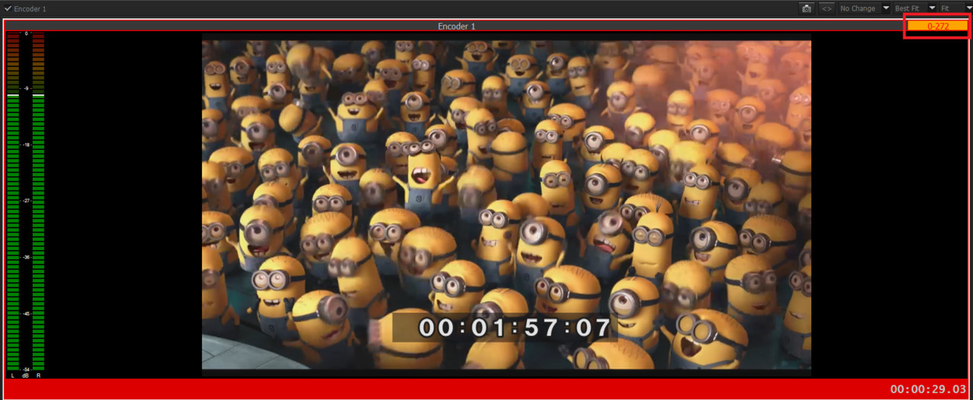
The causes of this rise could be either one or more of the following;
- CPU or GPU is not strong enough to encode it in real-time.
- Disk IO write performance is not good enough to keep up.
- Other hardware source is not okay for this type of configuration.
Metus Ingest does not support firewire. USB devices as long as the device has a driver (DirectShow filter) are supported.
To see supported capture cards click HERE.
Yes, you can use more than one Decklink card in a single machine. You need to install the decklink driver after plugging all decklink cards. You can use Decklink Duo / Quad or any other supported multi-input board for multichannel operation.
Know How
You will need to consider both your budget and your needs when deciding on your capture board(s).
BMD Decklink Studio has 1 channel - analog(via breakout cable), HDMI and HD-SDI input and output (on board)
BMD Decklink Duo has 2 channel - 2*HD-SDI inputs and outputs and 1 reference sync input (on board)
BMD Decklink Quad has 4 channel - 4*HD-SDI inputs and outputs (with miniSDI interface on board)
BMD Decklink 4K Extreme (former - Deckink HD Extreme+) has 2 channel - 2*HD-SDI inputs and outputs, 1*HDMI input and output (on board) and 1* analog input and output (via breakout cable)
You can buy Metus Ingest from our authorized dealers. You can buy directly from us where our authorized dealer is not available.
Yes, Metus Ingest has powerful scheduling function. You can define many schedule jobs for starting the capture in specific time and stopping the capture at specific time automatically. You can define hourly, daily, montly or yearly jobs for many purposes. To see how to use schedule feature click HERE.
Yes, you can use more than one different capture cards on a single machine.
You can capture from more than one VTR at the same time.
Please see detailed information on how to connect VTR and Metus INGEST workstation. Batch Capture Mode
When all VTRs are correctly connected, you can configure your capture profile, and batch capture settings if needed for each one.
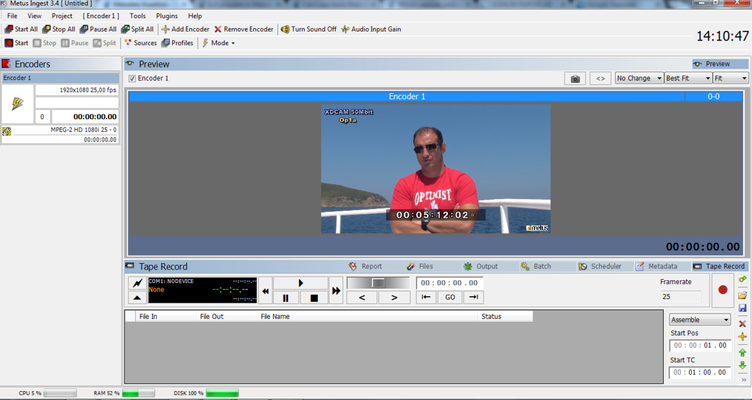
Know How
You will need an available RS422 port for each VTR you want to control at the sime time.
Blackmagic Decklink SDI has an onboard RS422 deck control port.
With Blackmagic Decklink Studio and Decklink 4K Extreme you can use the breakout cable and the RS422 deck control port available with it.
If your capture card has no RS422 port, then you can use your on board RS232 port(if available) with the help of a standard RS232-RS422 converter or cable.
The diagram for an RS232-RS422 cable is below;
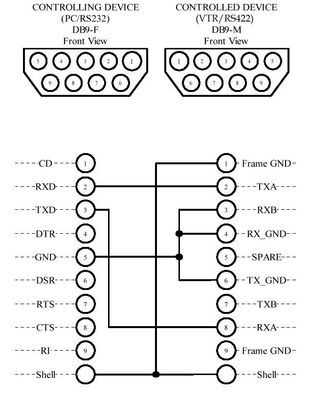
In Metus Ingest Pro, you can choose from many mux options such as MPEG-2 Transport stream, MPEG-2 Program stream, MPEG4, or Elementary stream.
In Edit Profile window, you can select your desired profile from H.264 tree. Then, you can define your wrapper type in Muxer tab/Compression Settings.
Also, as mentioned before, Metus INGEST can capitalize on latest GPU acceleration methods, Intel Quick Sync and Nvidia NVENC. In Edit Profile window, you can see GPU accelerated H.264 profiles under HARDWARE ACCELERATED / NVENC or INTEL. You can also define your wrapper type in Muxer/Compression Settings.
Supported timecodes are shown below ;
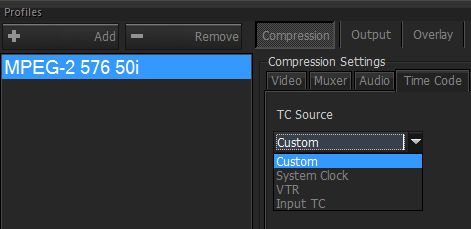
Custom : If you choose "Custom" , you can enter TC manually as it seen below.
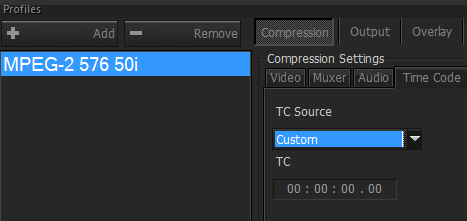
System Clock : If you choose "System Clock" , this action adds the your PC 's clock as timecode .
VTR : If you choose "VTR" , you can add VTR's timecode as timecode .
Input TC : If you choose " Input TC" , this action adds VITC or LTC as timecode .
NOTE : LTC and VITC are supported for Decklink Low Level only.
This error occurs when volume names on the PC are the same and also when the wrapper in use is MOV (Quicktime). For example, partitions D: and F: both have the same name. You need to change one of the volume names.
If you are going to synchronize multi inputs this may not provide frame accurate synchronizing. External timecode cards provide better solution for frame accurate synchronizing. It is explained in "How to import Timecode (LTC) via External Timecode Card ?" question.
This feature works with Decklink Cards only.
How To
1) Plug the cable coming from the timecode source to the computer's microphone input.
2) Open the Windows recording devices.
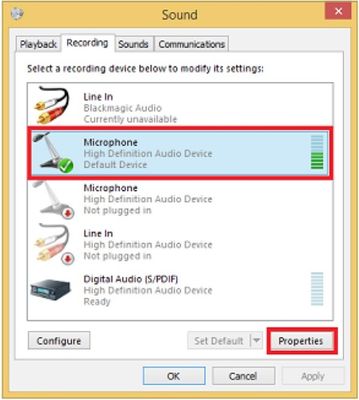
3) Go to the Advanced tab. Select the "2 Channel, 16 bit, 48000 Hz (DVD Quality)" from "Default Format" menu.
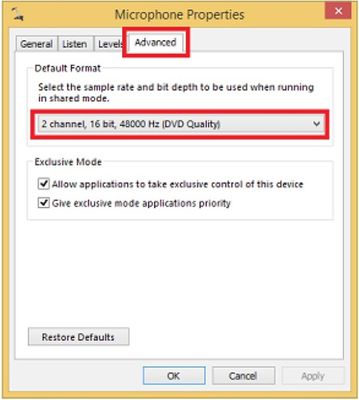
Configuring Timecode Settings.
4) Run the Metus INGEST.
5) Go to "Tools > Options > Capture Cards" menu.
6) Select "System Audio Inputs (LTC only)" option from "Time Code Source" menu.
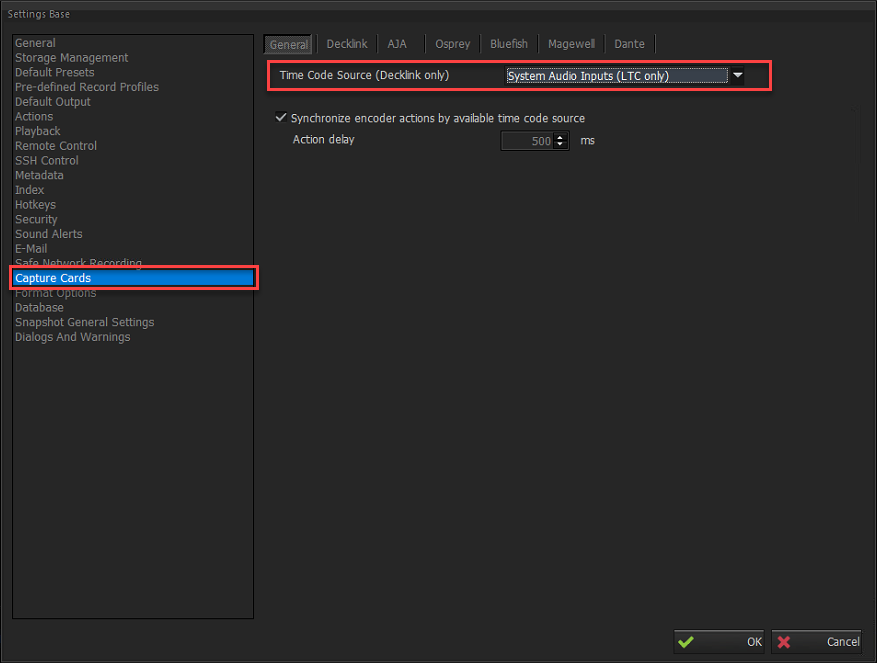
Adding an Encoder.
7) Click the "Add Encoder" button.
8) From newly appeared window select a Decklink card as a video source.

9) From "Source Settings > Select LTC Audio Input" menu, please select the microphone input.
10) Click on "OK" button and continue with next step.
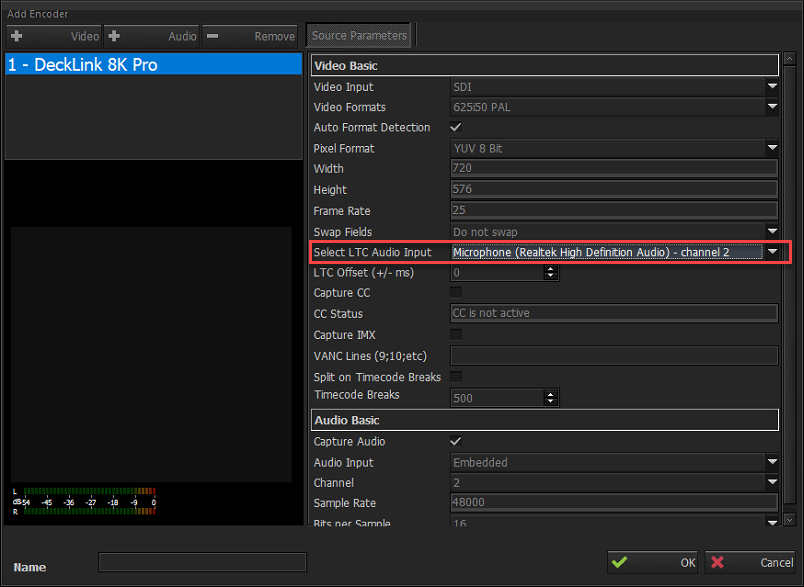
Adding a Profile and configuring preset settings.
10) Click on Profile menu and add a preset.
11) After you have added a preset, please go to "Compression > Time Code > TC Source" menu from the preset settings and select "Input TC" as a timecode source.
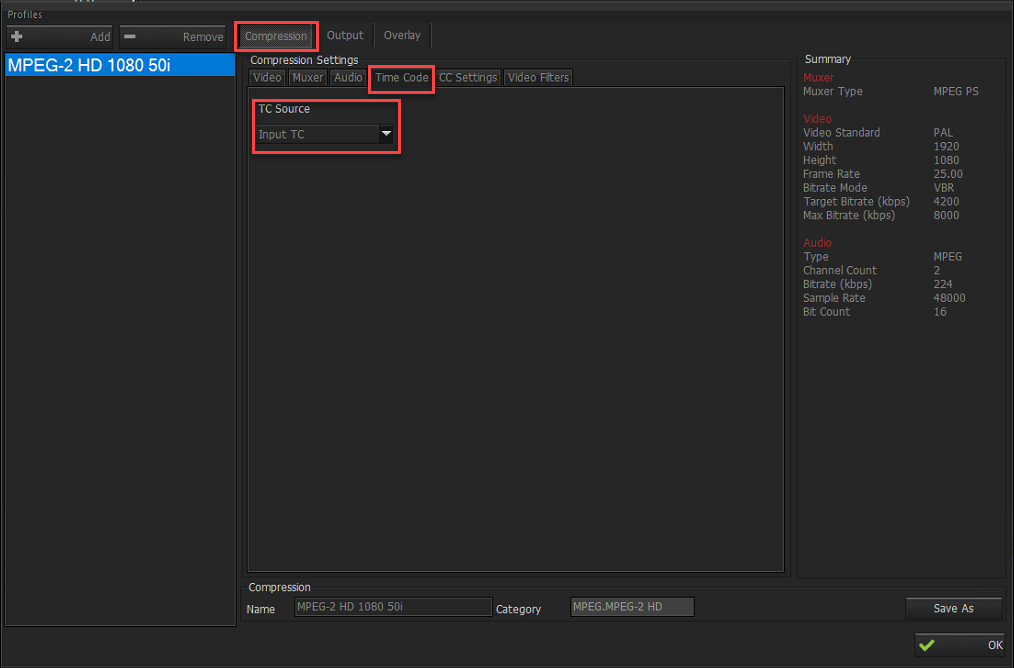
In order to observe the Timecode on the preview screen, please follow below instructions.
Adding a Timecode Preview.
1) Right click on "Encoder".
2) From newly appeared window select the "Settings" menu.
3) Open Encoder Settings.
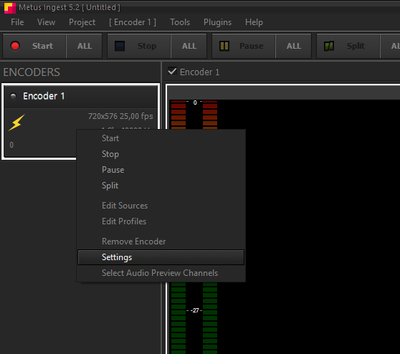
4) Select Preview menu.
5) Select "External" timecode type from the "TC Type" drop down menu.
6) Click on "OK" button.
6) Timecode counter will appear on the left bottom corner of the encoder preview screen.
Please see what file types support timecode writing.
Timecode Supported Codec and File Formats
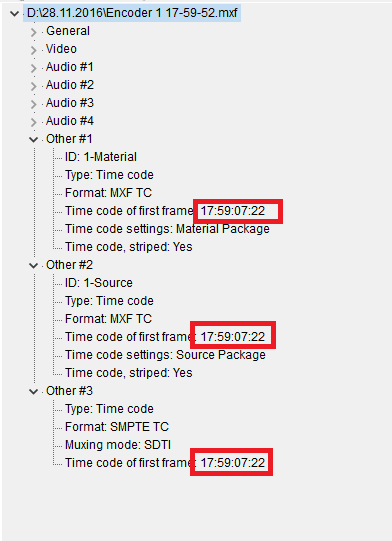
Configuring Timecode Settings
This feature works with Decklink Cards only.
Step 1. Run Metus INGEST.
Step 2. Go to "Tools > Options > Capture Cards" menu.
Step 3. From the Capture Cards menu please select “AEC Time Code Board” as a timecode source.
Step 4. In order to apply settings click “OK” button.
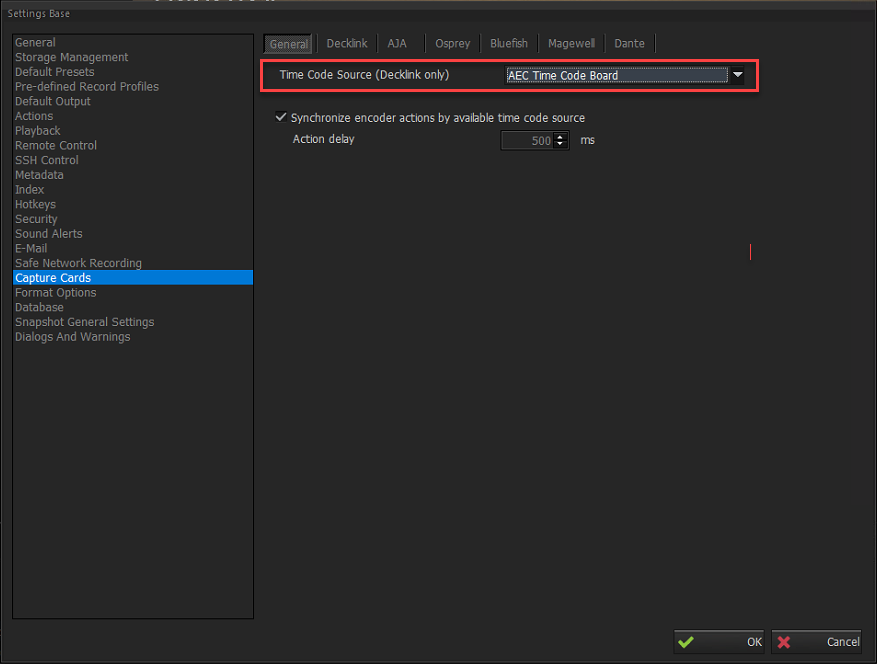
Adding an Encoder
Step 5. Click the "Add Encoder" button
Step 6. From newly appeared window select a Decklink card as a video source.
Step 7. Click on “OK” button to add the video signal.
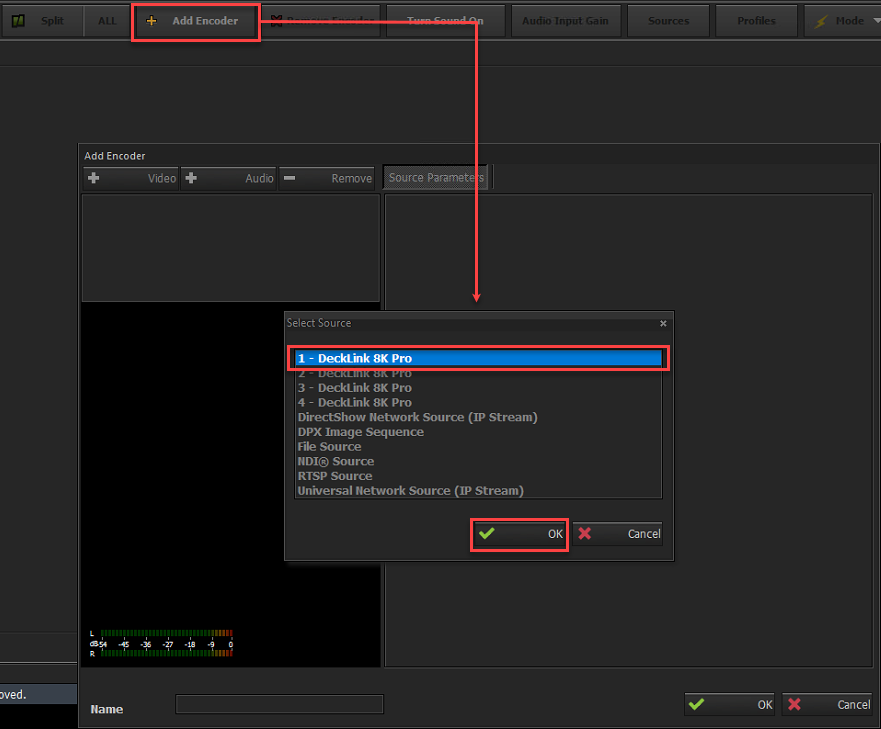
* On the next window the timecode status will appear on the source settings as an “External TC Source (Time Code Card)”.
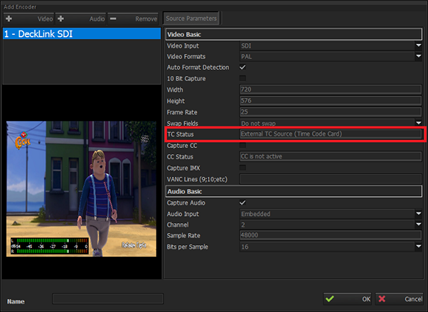
Step 8. To continue to configure the next settings click on “OK” button.
Adding a Profile and configuring preset settings.
Step 9. Click the "Profile" button and add a preset from the list.
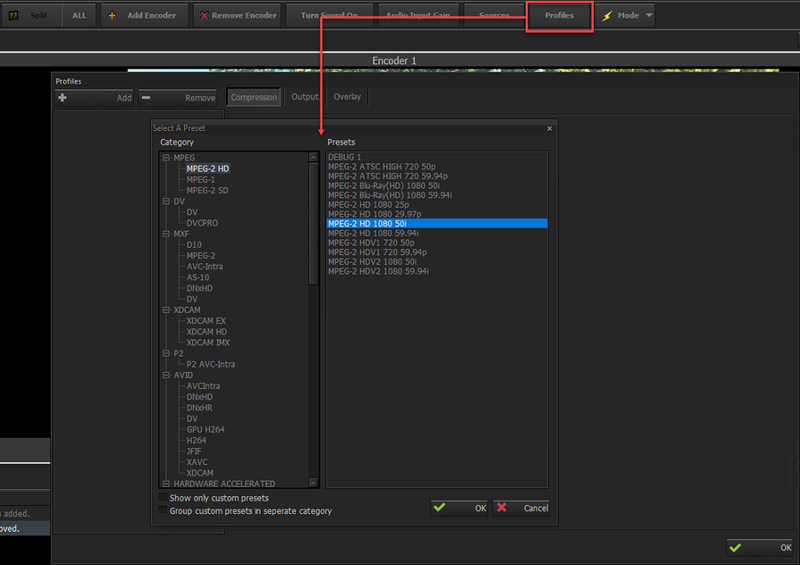
Step 10. After you have added a preset, please go to "Compression > Time Code > TC Source" menu from the preset settings and select "Input TC" as a timecode source.
Step 11. In order to apply the settings click “OK” button.
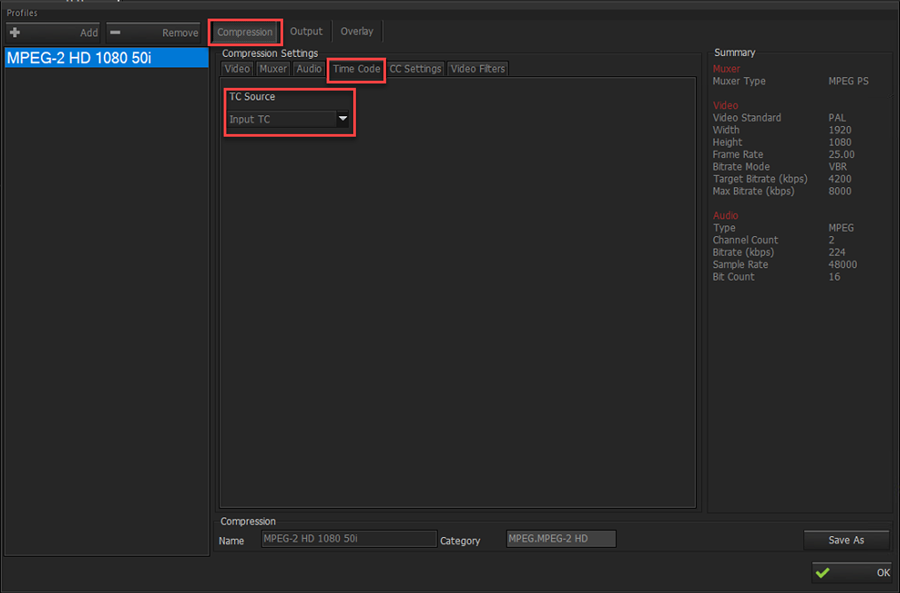
(In the created video file properties, you will be able to observe the timecode of the first frame)
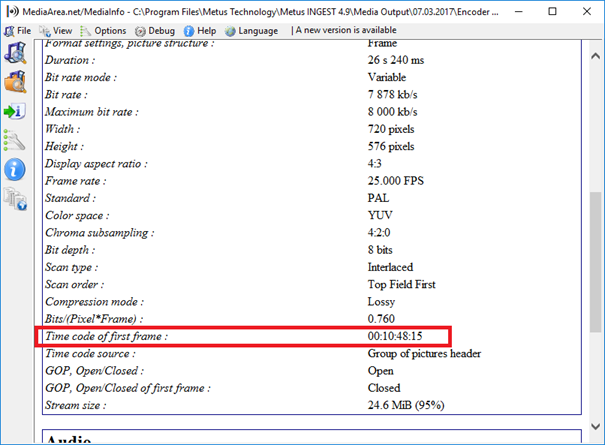
NOTE: In order to starts all the encoders by available timecode source please open "Tools > Options > Capture Cards" menu and enable the “Synchronize Encoder Action by Available Time Code Source” settings.
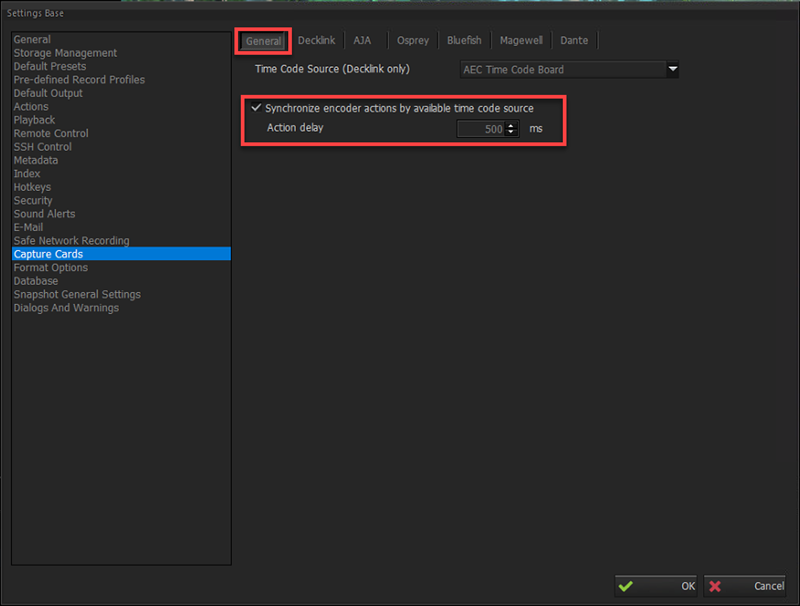
Blackmagic Decklink: External timecode card is needed. The card must be Adrienne Timecode card (PCIe-LTC/RDR-PCIe-VLTC/RDA-AEC-PCIe-41).
Deltacast: Natively supported on reference input; or can be added through a companion LTC card (option)
http://www.deltacast.tv/products/developer-products/accessories/a-ltc-1
AJA: Many AJA cards have built-in LTC input. So external/companion card is not needed
Yes its possible AVC intra, we check with ProRes and the bit depth have to be 16 bits.
If you are going to synchronize multi inputs this may not provide frame accurate synchronizing. External timecode cards provide better solution for frame accurate synchronizing. It is explained in "How to import Timecode (LTC) via External Timecode Card ?" menu.
This feature works with Decklink Cards only.
This feature supported by Metus INGEST 5.8.3.0 or later versions.
How To;
1) Run the Metus INGEST.
2) Go to "Tools > Options > Capture Cards" menu.
3) Select "System Audio Inputs (LTC only)" option from "Time Code Source" menu.
Adding an Encoder
4) Click the "Add Encoder" button.
5) From newly appeared window select a Decklink input as a video source.
6) From "Source Settings > Select LTC Audio Input" menu, please select the ASIO Channel input.
7) Click on "OK" button and continue with next step.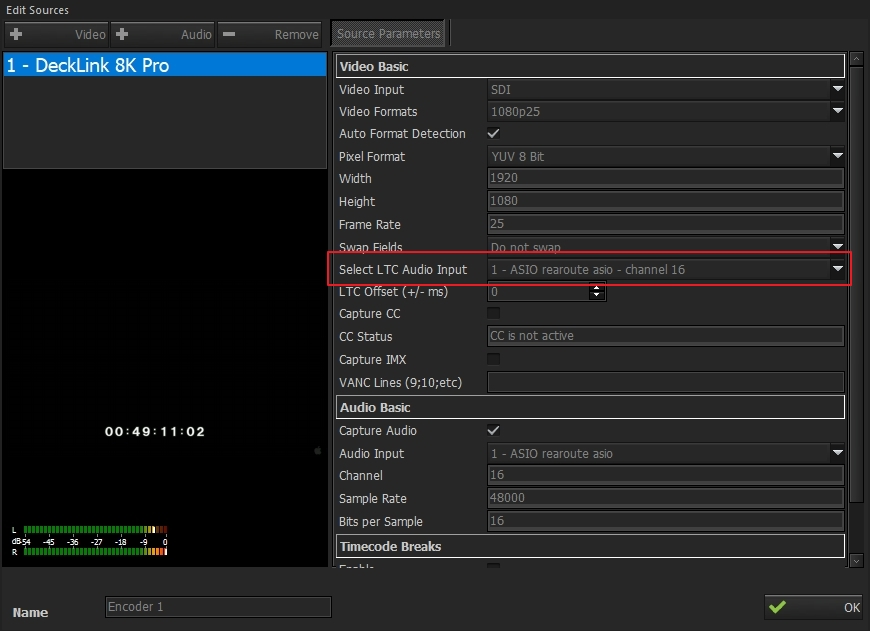
Adding a Profile and configuring preset settings.
8) Click on Profile menu and add a preset.
9) After you have added a preset, please go to "Compression > Time Code > TC Source" menu from the preset settings and select "Input TC" as a timecode source.
In order to observe the Timecode on the preview screen, please follow below instructions.
Adding a Timecode Preview.
1) Right click on "Encoder".
2) From newly appeared window select the "Settings" menu.
3) Open Encoder Settings.

4) Select Preview menu.
5) Select "External" timecode type from the "TC Type" drop down menu.
6) Click on "OK" button.
6) Timecode counter will appear on the left bottom corner of the encoder preview screen.